
https://ebookmass.com/product/etextbook-978-0073511245-

Instant digital products (PDF, ePub, MOBI) ready for you
Download now and discover formats that fit your needs...
eTextbook 978-0134015187 Fundamentals of General, Organic, and Biological Chemistry
https://ebookmass.com/product/etextbook-978-0134015187-fundamentalsof-general-organic-and-biological-chemistry/
ebookmass.com
Principles of General, Organic, & Biological Chemistry 3rd Edition Janice Gorzynski Smith
https://ebookmass.com/product/principles-of-general-organicbiological-chemistry-3rd-edition-janice-gorzynski-smith/
ebookmass.com
(eBook PDF) General, Organic, & Biological Chemistry 4th Edition
https://ebookmass.com/product/ebook-pdf-general-organic-biologicalchemistry-4th-edition/
ebookmass.com
Double-Decker Dreams 1st Edition Lindsay Macmillan


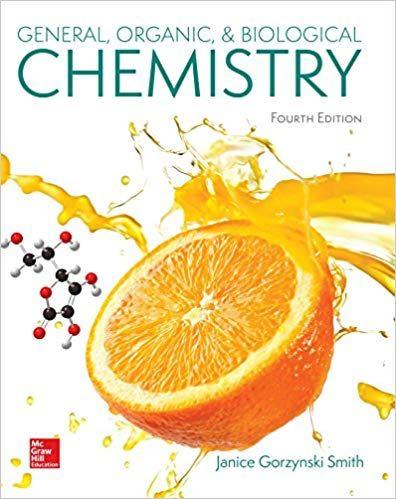
https://ebookmass.com/product/double-decker-dreams-1st-editionlindsay-macmillan/
ebookmass.com

Teaching by Principles 2nd Edition H. Douglas Brown
https://ebookmass.com/product/teaching-by-principles-2nd-edition-hdouglas-brown/
ebookmass.com
The Case Against 2 Per Cent Inflation 1st ed. Edition
Brendan Brown
https://ebookmass.com/product/the-case-against-2-per-centinflation-1st-ed-edition-brendan-brown/
ebookmass.com
The
Global Encyclopedia of Lesbian, Gay, Bisexual, Transgender, and Queer (LGBTQ) History Howard Chiang
https://ebookmass.com/product/the-global-encyclopedia-of-lesbian-gaybisexual-transgender-and-queer-lgbtq-history-howard-chiang/
ebookmass.com
Solution Architecture Patterns for Enterprise: A Guide to Building Enterprise Software Systems 1st Edition Chanaka
Fernando
https://ebookmass.com/product/solution-architecture-patterns-forenterprise-a-guide-to-building-enterprise-software-systems-1stedition-chanaka-fernando/ ebookmass.com
Cornerstones for Community College Success, 2/E




https://ebookmass.com/product/cornerstones-for-community-collegesuccess-2-e/
ebookmass.com

Africa and the Diaspora: Intersectionality and Interconnections Jamaine M. Abidogun (Editor)
https://ebookmass.com/product/africa-and-the-diasporaintersectionality-and-interconnections-jamaine-m-abidogun-editor/
ebookmass.com


This page intentionally left blank
Preface xxii
P.A.V.E. the Way to Student Learning xxvi
Acknowledgments xxxii
List of How To’s xxxiii
List of Applications xxxiv

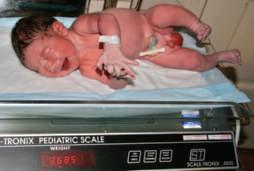
1 Matter and Measurement 1
1.1 Chemistry—The Science of Everyday Experience 2
1.2 States of Matter 3
1.3 Classification of Matter 5
1.4 Measurement 8
1.4A The Metric System 9
1.4B Measuring Length 10
1.4C Measuring Mass 10
1.4D Measuring Volume 11
1.5 Significant Figures 12
1.5A Determining the Number of Signifi cant Figures 13
1.5B Using Significant Figures in Multiplication and Division 13
1.5C Using Significant Figures in Addition and Subtraction 15
1.6 Scientific Notation 16
1.7 Problem Solving Using Conversion Factors 19
1.7A Conversion Factors 19
1.7B Solving a Problem Using One Conversion Factor 19
1.7C Solving a Problem Using Two or More Conversion Factors 21
1.8 FOCUS ON HEALTH & MEDICINE: Problem Solving Using Clinical Conversion Factors 22
1.9 Temperature 24
1.10 Density and Specific Gravity 25
1.10A Density 25
1.10B Specific Gravity 27
Chapter Highlights 28
Key Terms 28 Key Concepts 28 Problems 29
Challenge Problems 32


Atoms and the Periodic Table 34
2.1 Elements 35
2.1A Elements and the Periodic Table 36
2.1B FOCUS ON THE HUMAN BODY: The Elements of Life 37
2.1C Compounds 38
2.2 Structure of the Atom 40
2.3 Isotopes 43
2.3A Isotopes, Atomic Number, and Mass Number 43
2.3B Atomic Weight 46
2.3C FOCUS ON HEALTH & MEDICINE: Isotopes in Medicine 47
2.4 The Periodic Table 47
2.4A Basic Features of the Periodic Table 48
2.4B Characteristics of Groups 1A, 2A, 7A, and 8A 49
2.4C The Unusual Nature of Carbon 51
2.5 Electronic Structure 52
2.6 Electronic Configurations 55
2.6A First-Row Elements (Period 1) 55
2.6B Second-Row Elements (Period 2) 56
2.6C Electronic Configurations of Other Elements Using the Periodic Table 58
2.7 Valence Electrons 60
2.7A Relating Valence Electrons to Group Number 60
2.7B Electron-Dot Symbols 62
2.8 Periodic Trends 63
2.8A Atomic Size 63
2.8B Ionization Energy 64 Chapter Highlights 66 Key Terms 66 Key Concepts 66 Problems 67 Challenge Problems 71
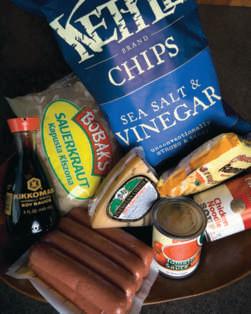

3 Ionic Compounds 72
3.1 Introduction to Bonding 73
3.2 Ions 75
3.2A Cations and Anions 75
3.2B Relating Group Number to Ionic Charge for Main Group Elements 78
3.2C Metals with Variable Charge 80
3.2D FOCUS ON THE HUMAN BODY: Important Ions in the Body 81
3.3 Ionic Compounds 83
3.3A Formulas for Ionic Compounds 84
3.3B FOCUS ON HEALTH & MEDICINE: Ionic Compounds in Consumer Products 86
3.4 Naming Ionic Compounds 87
3.4A Naming Cations 87
3.4B Naming Anions 87
3.4C Naming Ionic Compounds with Cations from Main Group Metals 88
3.4D Naming Ionic Compounds Containing Metals with Variable Charge 89
3.4E Writing a Formula from the Name of an Ionic Compound 90
3.5 Physical Properties of Ionic Compounds 90
3.6 Polyatomic Ions 92
3.6A Writing Formulas for Ionic Compounds with Polyatomic Ions 92
3.6B Naming Ionic Compounds with Polyatomic Ions 94
3.6C FOCUS ON HEALTH & MEDICINE: Useful Ionic Compounds 94
3.6D FOCUS ON HEALTH & MEDICINE: Treating Osteoporosis 95
Chapter Highlights 95
Key Terms 95
Key Concepts 95 Problems 96
Challenge Problems 100
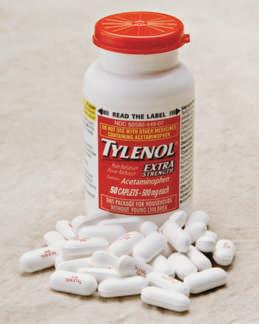

4 Covalent Compounds 101
4.1 Introduction to Covalent Bonding 102
4.1A Covalent Bonding and the Periodic Table 103
4.1B FOCUS ON THE HUMAN BODY: Covalent Molecules and the Cardiovascular System 105
4.2 Lewis Structures 106
4.2A Drawing Lewis Structures 106
4.2B Multiple Bonds 108
4.3 Exceptions to the Octet Rule 110
4.3A Elements in Group 3A 110
4.3B Elements in the Third Row 110
4.4 Resonance 111
4.4A Drawing Resonance Structures 111
4.4B FOCUS ON THE ENVIRONMENT: Ozone 113
4.5 Naming Covalent Compounds 113
4.6 Molecular Shape 114
4.6A Two Groups Around an Atom 115
4.6B Three Groups Around an Atom 116
4.6C Four Groups Around an Atom 116
4.7 Electronegativity and Bond Polarity 118
4.8 Polarity of Molecules 121
4.9 FOCUS ON HEALTH & MEDICINE: Covalent Drugs and Medical Products 122
Chapter Highlights 125 Key Terms 125 Key Concepts 125 Problems 126 Challenge Problems 130


5 Chemical Reactions 131
5.1 Introduction to Chemical Reactions 132
5.1A General Features of Physical and Chemical Changes 132
5.1B Writing Chemical Equations 134
5.2 Balancing Chemical Equations 136
5.3 Types of Reactions 140
5.3A Combination and Decomposition Reactions 140
5.3B Replacement Reactions 143
5.4 Oxidation and Reduction 145
5.4A General Features of Oxidation–Reduction Reactions 145
5.4B Examples of Oxidation–Reduction Reactions 147
5.4C FOCUS ON HEALTH & MEDICINE: Pacemakers 149
5.5 The Mole and Avogadro’s Number 150
5.6 Mass to Mole Conversions 152
5.6A Molar Mass 153
5.6B Relating Grams to Moles 154
5.6C Relating Grams to Number of Atoms or Molecules 155
5.7 Mole Calculations in Chemical Equations 156
5.8 Mass Calculations in Chemical Equations 158
5.8A Converting Moles of Reactant to Grams of Product 158
5.8B Converting Grams of Reactant to Grams of Product 160
5.9 Percent Yield 163
5.9A Calculating Percent Yield 164
5.9B Calculating Percent Yield from Grams of Reactant 165
5.9C FOCUS ON HEALTH & MEDICINE: The Importance of Percent Yield in the Pharmaceutical Industry 167
5.10 Limiting Reactants 168
5.10A Determining the Limiting Reactant 169
5.10B Using the Limiting Reactant to Determine How Much Product Is Formed 170
5.10C Determining the Limiting Reactant Using the Number of Grams 172
Chapter Highlights 173
Key Terms 173
Key Concepts 173
Problems 174
Challenge Problems 180


6 Energy Changes, Reaction Rates, and Equilibrium 181
6.1 Energy 182
6.1A The Units of Energy 182
6.1B FOCUS ON THE HUMAN BODY: Energy and Nutrition 183
6.2 Energy Changes in Reactions 184
6.2A Bond Dissociation Energy 185
6.2B Calculations Involving Δ H Values 187
6.3 Energy Diagrams 189
6.4 Reaction Rates 192
6.4A How Concentration and Temperature Affect Reaction Rate 192
6.4B Catalysts 193
6.4C FOCUS ON THE HUMAN BODY: Lactase, a Biological Catalyst 194
6.4D FOCUS ON THE ENVIRONMENT: Catalytic Converters 195
6.5 Equilibrium 195
6.5A The Equilibrium Constant 197
6.5B The Magnitude of the Equilibrium Constant 198
6.5C Calculating the Equilibrium Constant 200
6.6 Le Châtelier’s Principle 201
6.6A Concentration Changes 202
6.6B Temperature Changes 203
6.6C Pressure Changes 204
6.7 FOCUS ON THE HUMAN BODY: Body Temperature 206
Chapter Highlights 207
Key Terms 207 Key Concepts 207 Problems 208
Challenge Problems 213


7 Gases, Liquids, and Solids 214
7.1 The Three States of Matter 215
7.2 Gases and Pressure 216
7.2A Properties of Gases 216
7.2B Gas Pressure 217
7.2C FOCUS ON HEALTH & MEDICINE: Blood Pressure 218
7.3 Gas Laws That Relate Pressure, Volume, and Temperature 219
7.3A Boyle’s Law—How the Pressure and Volume of a Gas Are Related 219
7.3B Charles’s Law—How the Volume and Temperature of a Gas Are Related 221
7.3C Gay–Lussac’s Law—How the Pressure and Temperature of a Gas Are Related 223
7.3D The Combined Gas Law 225
7.4 Avogadro’s Law—How Volume and Moles Are Related 226
7.5 The Ideal Gas Law 229
7.6 Dalton’s Law and Partial Pressures 232
7.7 Intermolecular Forces, Boiling Point, and Melting Point 234
7.7A London Dispersion Forces 234
7.7B Dipole–Dipole Interactions 235
7.7C Hydrogen Bonding 235
7.7D Boiling Point and Melting Point 237
7.8 The Liquid State 239
7.8A Vapor Pressure 239
7.8B Viscosity and Surface Tension 240
7.9 The Solid State 241
7.10 Specific Heat 243
7.11 Energy and Phase Changes 246
7.11A Converting a Solid to a Liquid 246
7.11B Converting a Liquid to a Gas 247
7.11C Converting a Solid to a Gas 248
7.12 Heating and Cooling Curves 249
7.12A Heating Curves 249
7.12B Cooling Curves 250
7.12C Combining Energy Calculations 251
Chapter Highlights 253 Key Terms 253 Key Concepts 253
Key Equations—The Gas Laws 254 Problems 255 Challenge Problems 261

8 Solutions 262
8.1 Mixtures 263
8.1A Solutions 263
8.1B Colloids and Suspensions 264
8.2 Electrolytes and Nonelectrolytes 265
8.2A Classification 265
8.2B Equivalents 266
8.3 Solubility—General Features 268
8.3A Basic Principles 268
8.3B Ionic Compounds—Additional Principles 271
8.4 Solubility—Effects of Temperature and Pressure 272
8.4A Temperature Effects 272
8.4B Pressure Effects 272
8.5 Concentration Units—Percent Concentration 273
8.5A Weight/Volume Percent 273
8.5B Volume/Volume Percent 275
8.5C Using a Percent Concentration as a Conversion Factor 275
8.5D Parts Per Million 277
8.6 Concentration Units—Molarity 278
8.7 Dilution 281
8.8 Colligative Properties 283
8.8A Boiling Point Elevation 283
8.8B Freezing Point Depression 285
8.9 Osmosis and Dialysis 286
8.9A Osmotic Pressure 286
8.9B FOCUS ON THE HUMAN BODY: Osmosis and Biological Membranes 287
8.9C FOCUS ON HEALTH & MEDICINE: Dialysis 288
Chapter Highlights 290
Key Terms 290
Key Concepts 290
Key Equations—Concentration 291
Problems 291
Challenge Problems 296
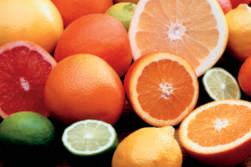

9 Acids and Bases 297
9.1 Introduction to Acids and Bases 298
9.1A Brønsted–Lowry Acids 299
9.1B Brønsted–Lowry Bases 301
9.2 The Reaction of a Brønsted–Lowry Acid with a Brønsted–Lowry Base 303
9.3 Acid and Base Strength 306
9.3A Relating Acid and Base Strength 306
9.3B Using Acid Strength to Predict the Direction of Equilibrium 311
9.4 Equilibrium and Acid Dissociation Constants 313
9.5 The Dissociation of Water 315
9.6 The pH Scale 317
9.6A Calculating pH 318
9.6B Calculating pH Using a Calculator 320
9.6C FOCUS ON THE HUMAN BODY: The pH of Body Fluids 321
9.7 Common Acid–Base Reactions 322
9.7A Reaction of Acids with Hydroxide Bases 322
9.7B Reaction of Acids with Bicarbonate and Carbonate 324
9.8 The Acidity and Basicity of Salt Solutions 325
9.9 Titration 326
9.10 Buffers 329
9.10A General Characteristics of a Buffer 329
9.10B Calculating the pH of a Buffer 331
9.10C FOCUS ON THE ENVIRONMENT: Acid Rain and a Naturally Buffered Lake 332
9.11 FOCUS ON THE HUMAN BODY: Buffers in the Blood 333
Chapter Highlights 334

Key Terms 334
Key Concepts 334 Problems 335
Challenge Problems 340
10 Nuclear Chemistry 341
10.1 Introduction 342
10.1A Isotopes 342
10.1B Types of Radiation 343
10.2 Nuclear Reactions 344
10.2A Alpha Emission 345
10.2B Beta Emission 346
10.2C Positron Emission 348
10.2D Gamma Emission 349
10.3 Half-Life 351
10.3A General Features 351
10.3B Archaeological Dating 352
10.4 Detecting and Measuring Radioactivity 353
10.4A Measuring the Radioactivity in a Sample 354
10.4B FOCUS ON HEALTH & MEDICINE: The Effects of Radioactivity 355
10.4C Measuring Human Exposure to Radioactivity 356
10.5 FOCUS ON HEALTH & MEDICINE: Medical Uses of Radioisotopes 356
10.5A Radioisotopes Used in Diagnosis 356
10.5B Radioisotopes Used in Treatment 358
10.5C Positron Emission Tomography—PET Scans 358
10.6 Nuclear Fission and Nuclear Fusion 359
10.6A Nuclear Fission 360
10.6B Nuclear Fusion 362
10.7 FOCUS ON HEALTH & MEDICINE: Medical Imaging Without Radioactivity 362
Chapter Highlights 363 Key Terms 363 Key Concepts 364 Problems 364
Challenge Problems 368


11
Introduction to Organic Molecules and Functional Groups 369
11.1 Introduction to Organic Chemistry 370
11.2 Characteristic Features of Organic Compounds 371
11.3 Shapes of Organic Molecules 374
11.4 Drawing Organic Molecules 379
11.4A Condensed Structures 379
11.4B Skeletal Structures 381
11.5 Functional Groups 382
11.5A Hydrocarbons 383
11.5B Compounds Containing a Single Bond to a Heteroatom 384
11.5C Compounds Containing a C O Group 385
11.6 Properties of Organic Compounds 390
11.6A Polarity 390
11.6B Solubility 393
11.6C FOCUS ON THE ENVIRONMENT: Environmental Pollutants 395
11.7 FOCUS ON HEALTH & MEDICINE: Vitamins 395
11.7A Vitamin A 396
11.7B Vitamin C 397
Chapter Highlights 398 Key Terms 398 Key Concepts 398 Problems 399 Challenge Problems 406 407

Introduction 408
Simple Alkanes 409
Acyclic Alkanes Having Fewer Than Five Carbons 409
Acyclic Alkanes Having Five or More Carbons 411 Classifying Carbon Atoms 412 Bond Rotation and Skeletal Structures for Acyclic Alkanes 413
An Introduction to Nomenclature 414
The IUPAC System of Nomenclature 414 FOCUS ON HEALTH & MEDICINE: Naming New Drugs 415 Alkane Nomenclature 415
12.4A Naming Substituents 416
12.4B Naming an Acyclic Alkane 417
12.5 Cycloalkanes 420
12.5A Simple Cycloalkanes 420
12.5B Naming Cycloalkanes 421
12.6 FOCUS ON THE ENVIRONMENT: Fossil Fuels 423
12.7 Physical Properties 424
12.8 FOCUS ON THE ENVIRONMENT: Combustion 425
12.9 Halogenation of Alkanes 427
Chapter Highlights 428
Key Terms 428
Key Concepts 428
Problems 429
Challenge Problems 433


13 Unsaturated Hydrocarbons 434
13.1 Alkenes and Alkynes 435
13.2 Nomenclature of Alkenes and Alkynes 437
13.3 Cis–Trans Isomers 440
13.3A Stereoisomers—A New Class of Isomer 440
13.3B FOCUS ON HEALTH & MEDICINE: Saturated and Unsaturated Fatty Acids 443
13.4 Interesting Alkenes in Food and Medicine 445
13.5 FOCUS ON HEALTH & MEDICINE: Oral Contraceptives 446
13.6 Reactions of Alkenes 447
13.6A Addition of Hydrogen—Hydrogenation 447
13.6B Addition of Halogen—Halogenation 449
13.6C Addition of Hydrogen Halides—Hydrohalogenation 449
13.6D Addition of Water—Hydration 451
13.7 FOCUS ON HEALTH & MEDICINE: Margarine or Butter? 452
13.8 Polymers—The Fabric of Modern Society 454
13.8A Synthetic Polymers 454
13.8B FOCUS ON THE ENVIRONMENT: Polymer Recycling 456
13.9 Aromatic Compounds 457
13.10 Nomenclature of Benzene Derivatives 458
13.10A Monosubstituted Benzenes 459
13.10B Disubstituted Benzenes 459
13.10C Polysubstituted Benzenes 460
13.10D Aromatic Compounds with More Than One Ring 460
13.11 FOCUS ON HEALTH & MEDICINE: Aromatic Drugs, Sunscreens, and Carcinogens 461
13.12 FOCUS ON HEALTH & MEDICINE: Phenols as Antioxidants 463
13.13 Reactions of Aromatic Compounds 464
13.13A Chlorination and the Synthesis of the Pesticide DDT 465
13.13B FOCUS ON HEALTH & MEDICINE: Nitration and Sulfa Drugs 465
13.13C Sulfonation and Detergent Synthesis 466
Chapter Highlights 467
Key Terms 467
Key Reactions 467
Key Concepts 467
Problems 468
Challenge Problems 474


14 Organic Compounds That Contain Oxygen, Halogen, or Sulfur 475
14.1 Introduction 476
14.2 Structure and Properties of Alcohols 478
14.3 Nomenclature of Alcohols 480
14.4 Interesting Alcohols 482
14.5 Reactions of Alcohols 484
14.5A Dehydration 484
14.5B Oxidation 486
14.5C FOCUS ON THE HUMAN BODY: Oxidation and Blood Alcohol Screening 488
14.6 FOCUS ON HEALTH & MEDICINE: Ethanol, the Most Widely Abused Drug 489
14.6A The Metabolism of Ethanol 489
14.6B Health Effects of Alcohol Consumption 490
14.7 Structure and Properties of Ethers 490
14.7A Physical Properties 492
14.7B Naming Ethers 493
14.8 FOCUS ON HEALTH & MEDICINE: Ethers as Anesthetics 494
14.9 Alkyl Halides 495
14.9A Physical Properties 496
14.9B Nomenclature 496
14.9C Interesting Alkyl Halides 497
14.9D FOCUS ON THE ENVIRONMENT: Alkyl Halides and the Ozone Layer 498
14.10 Organic Compounds That Contain Sulfur 499
Chapter Highlights 501
Key Terms 501
Key Reactions 501 Key Concepts 502 Problems 502 Challenge Problems 507


15 The Three-Dimensional Shape of Molecules 508
15.1 Isomers—A Review 509
15.2 Looking Glass Chemistry—Molecules and Their Mirror Images 510
15.2A What It Means to Be Chiral or Achiral 511
15.2B The Chirality of Molecules 511
15.2C Chirality in Nature 513
15.3 Chirality Centers 513
15.3A Locating Chirality Centers 514
15.3B Drawing a Pair of Enantiomers 516
15.4 Chirality Centers in Cyclic Compounds 517
15.4A Locating Chirality Centers on Ring Carbons 517
15.4B FOCUS ON HEALTH & MEDICINE: The Unforgettable Legacy of Thalidomide 518
15.5 FOCUS ON HEALTH & MEDICINE: Chiral Drugs 519
15.5A Chiral Pain Relievers 519
15.5B Parkinson’s Disease and L-Dopa 521
15.6 Fischer Projections 522
15.7 Optical Activity 524
15.7A The Physical Properties of Enantiomers 524
15.7B Specific Rotation 525
15.8 Compounds with Two or More Chirality Centers 526
15.9 FOCUS ON THE HUMAN BODY: The Sense of Smell 529
Chapter Highlights 530
Key Terms 530
Key Concepts 531
Problems 531
Challenge Problems 536


16 Aldehydes and Ketones 537
16.1 Structure and Bonding 538
16.2 Nomenclature 539
16.2A Naming Aldehydes 539
16.2B Naming Ketones 541
16.3 Physical Properties 542
16.4 FOCUS ON HEALTH & MEDICINE: Interesting Aldehydes and Ketones 544
16.5 Reactions of Aldehydes and Ketones 546
16.5A General Considerations 546
16.5B Oxidation of Aldehydes 546
16.6 Reduction of Aldehydes and Ketones 548
16.6A Specific Features of Carbonyl Reductions 549
16.6B Examples of Carbonyl Reduction in Organic Synthesis 550
16.6C FOCUS ON THE HUMAN BODY: Biological Reductions 551
16.7 FOCUS ON THE HUMAN BODY: The Chemistry of Vision 552
16.8 Acetal Formation 554
16.8A Acetals and Hemiacetals 554
16.8B Cyclic Hemiacetals 557
16.8C Acetal Hydrolysis 559
Chapter Highlights 560
Key Terms 560
Key Reactions 560
Key Concepts 561 Problems 562
Challenge Problems 568


17 Carboxylic Acids, Esters, and Amides 569
17.1 Structure and Bonding 570
17.2 Nomenclature 572
17.2A Naming a Carboxylic Acid—RCOOH 572
17.2B Naming an Ester—RCOOR' 574
17.2C Naming an Amide 575
17.3 Physical Properties 576
17.4 Interesting Carboxylic Acids in Consumer Products and Medicines 578
17.4A FOCUS ON HEALTH & MEDICINE: Skin Care Products 578
17.4B FOCUS ON HEALTH & MEDICINE: Aspirin and Anti-Inflammatory Agents 579
17.5 Interesting Esters and Amides 580
17.6 The Acidity of Carboxylic Acids 581
17.6A Reactions with Bases 581
17.6B Carboxylate Anions—Salts of Carboxylic Acids 582
17.6C How Does Soap Clean Away Dirt? 583
17.7 FOCUS ON HEALTH & MEDICINE: Aspirin 585
17.8 The Conversion of Carboxylic Acids to Esters and Amides 587
17.8A Ester Formation 587
17.8B Amide Formation 589
17.9 Hydrolysis of Esters and Amides 591
17.9A Ester Hydrolysis 591
17.9B Amide Hydrolysis 592
17.9C FOCUS ON HEALTH & MEDICINE: Olestra, a Synthetic Fat 593
17.10 Synthetic Polymers in Modern Society—Polyamides and Polyesters 595
17.10A Nylon—A Polyamide 595
17.10B Polyesters 596
17.10C FOCUS ON HEALTH & MEDICINE: Dissolving Sutures 597
17.10D FOCUS ON THE ENVIRONMENT: Polymer Recycling 598
17.11 FOCUS ON HEALTH & MEDICINE: Penicillin 598
Chapter Highlights 599
Key Terms 599
Key Reactions 600
Key Concepts 600
Problems 601
Challenge Problems 606


18 Amines and Neurotransmitters 607
18.1 Structure and Bonding 608
18.2 Nomenclature 611
18.2A Primary Amines 611
18.2B Secondary and Tertiary Amines 611
18.2C Aromatic Amines 612
18.2D Miscellaneous Nomenclature Facts 613
18.3 Physical Properties 613
18.4 FOCUS ON HEALTH & MEDICINE: Caffeine and Nicotine 615
18.4A Caffeine 615
18.4B Nicotine 616
18.5 Alkaloids—Amines from Plant Sources 617
18.5A Morphine and Related Alkaloids 617
18.5B Quinine 618
18.5C Atropine 619
18.6 Amines as Bases 619
18.6A Reaction of Amines with Acids 620
18.6B Ammonium Salts 621
18.7 FOCUS ON HEALTH & MEDICINE: Ammonium Salts as Useful Drugs 623
18.8 Neurotransmitters 624
18.8A Norepinephrine and Dopamine 625
18.8B Serotonin 626
18.8C Acetylcholine and Nicotine Addiction 627
18.9 FOCUS ON HEALTH & MEDICINE: Epinephrine and Related Compounds 628
18.9A Derivatives of 2-Phenylethylamine 629
18.9B Drugs to Treat Asthma 630
18.10 FOCUS ON HEALTH & MEDICINE: Histamines and Antihistamines 630
Chapter Highlights 631
Key Terms 631
Key Reactions 631
Key Concepts 631
Problems 632
Challenge Problems 637


19 Lipids 638
19.1 Introduction to Lipids 639
19.2 Fatty Acids 641
19.3 Waxes 644
19.4 Triacylglycerols—Fats and Oils 646
19.4A General Features 646
19.4B FOCUS ON HEALTH & MEDICINE: Fats and Oils in the Diet 649
19.5 Hydrolysis of Triacylglycerols 650
19.5A FOCUS ON THE HUMAN BODY: Metabolism of Triacylglycerols 651
19.5B Soap Synthesis 653
19.6 Phospholipids 654
19.6A Phosphoacylglycerols 654
19.6B Sphingomyelins 656
19.7 Cell Membranes 658
19.7A Structure of the Cell Membrane 658
19.7B Transport Across a Cell Membrane 660
19.8 FOCUS ON HEALTH & MEDICINE: Cholesterol, the Most Prominent Steroid 661
19.9 Steroid Hormones 664
19.10 FOCUS ON HEALTH & MEDICINE: Fat-Soluble Vitamins 666
19.11 FOCUS ON HEALTH & MEDICINE: Prostaglandins and Leukotrienes 668
19.11A Prostaglandins 668
19.11B Asthma and Leukotrienes 669
Chapter Highlights 670
Key Terms 670
Key Reactions 670
Key Concepts 671
Problems 672
Challenge Problems 677


20 Carbohydrates 678
20.1 Introduction 679
20.2 Monosaccharides 680
20.2A Fischer Projection Formulas 682
20.2B Monosaccharides with More Than One Chirality Center 683
20.2C Common Monosaccharides 685
20.3 The Cyclic Forms of Monosaccharides 686
20.3A The Cyclic Forms of D-Glucose 687
20.3B Haworth Projections 689
20.3C The Cyclic Forms of Fructose, a Ketohexose 691
20.4 Reduction and Oxidation of Monosaccharides 691
20.4A Reduction of the Aldehyde Carbonyl Group 692
20.4B Oxidation of the Aldehyde Carbonyl Group 693
20.4C FOCUS ON HEALTH & MEDICINE: Monitoring Glucose Levels 695
20.5 Disaccharides 695
20.5A FOCUS ON HEALTH & MEDICINE: Lactose Intolerance 698
20.5B FOCUS ON HEALTH & MEDICINE: Sucrose and Artificial Sweeteners 699
20.6 Polysaccharides 700
20.6A Cellulose 701
20.6B Starch 702
20.6C Glycogen 703
20.7 FOCUS ON THE HUMAN BODY: Useful Carbohydrate Derivatives 704
20.7A Glycosaminoglycans 704
20.7B Chitin 704
20.8 FOCUS ON THE HUMAN BODY: Blood Type 706
Chapter Highlights 707
Key Terms 707
Key Reactions 708
Key Concepts 708
Problems 709
Challenge Problems 714


Amino Acids, Proteins, and Enzymes 715
21.1 Introduction 716
21.2 Amino Acids 717
21.2A General Features of Amino Acids 717
21.2B Stereochemistry of Amino Acids 719
21.3 Acid–Base Behavior of Amino Acids 720
21.4 Peptides 722
21.5 FOCUS ON THE HUMAN BODY: Biologically Active Peptides 727
21.5A Neuropeptides—Enkephalins and Pain Relief 727
21.5B Peptide Hormones—Oxytocin and Vasopressin 727
21.6 Proteins 729
21.6A Primary Structure 729
21.6B Secondary Structure 730
21.6C Tertiary and Quaternary Structure 732
21.7 FOCUS ON THE HUMAN BODY: Common Proteins 736
21.7A α-Keratins 736
21.7B Collagen 736
21.7C Hemoglobin and Myoglobin 737
21.8 Protein Hydrolysis and Denaturation 739
21.8A Protein Hydrolysis 739
21.8B Protein Denaturation 740
21.9 Enzymes—Characteristics and Classification 741
21.9A Characteristics of Enzymes 741
21.9B Classification of Enzymes 742
21.9C Naming Enzymes 745
21.10 How Enzymes Work 746
21.10A Enzyme Specificity 746
21.10B Factors That Affect Enzyme Activity 747
21.10C Allosteric Control 749
21.10D Enzyme Inhibitors 750
21.10E Zymogens 751
21.11 FOCUS ON HEALTH & MEDICINE: Using Enzymes to Diagnose and Treat Diseases 752
21.11A Enzyme Levels as Diagnostic Tools 752
21.11B Treating Disease with Drugs That Interact with Enzymes 752
Chapter Highlights 754
Key Terms 754
Key Concepts 754
Problems 755
Challenge Problems 759


22 Nucleic Acids and Protein Synthesis 760
22.1 Nucleosides and Nucleotides 761
22.1A Nucleosides—Joining a Monosaccharide and a Base 761
22.1B Nucleotides—Joining a Nucleoside with a Phosphate 764
22.2 Nucleic Acids 766
22.3 The DNA Double Helix 768
22.4 Replication 771
22.5 RNA 774
22.6 Transcription 775
22.7 The Genetic Code 777
22.8 Translation and Protein Synthesis 778
22.9 Mutations and Genetic Diseases 781
22.10 Recombinant DNA 784
22.10A General Principles 784
22.10B Polymerase Chain Reaction 785
22.10C FOCUS ON THE HUMAN BODY: DNA Fingerprinting 787
22.11 FOCUS ON HEALTH & MEDICINE: Viruses 788
Chapter Highlights 790
Key Terms 790
Key Concepts 790
Problems 791
Challenge Problems 796


23 Metabolism and Energy Production 797
23.1 Introduction 798
23.2 An Overview of Metabolism 799
23.2A Stage [1]—Digestion 799
23.2B Stages [2]–[4] of Catabolism 800
23.3 ATP and Energy Production 802
23.3A General Features of ATP Hydrolysis and Formation 802
23.3B Coupled Reactions in Metabolic Pathways 804
23.3C FOCUS ON THE HUMAN BODY: Creatine and Athletic Performance 807
23.4 Coenzymes in Metabolism 808
23.4A Coenzymes NAD+ and NADH 808
23.4B Coenzymes FAD and FADH2 810
23.4C Coenzyme A 811
23.5 The Citric Acid Cycle 812
23.5A Overview of the Citric Acid Cycle 812
23.5B Specific Steps of the Citric Acid Cycle 813
23.6 The Electron Transport Chain and Oxidative Phosphorylation 815
23.6A The Electron Transport Chain 816
23.6B ATP Synthesis by Oxidative Phosphorylation 817
23.6C ATP Yield from Oxidative Phosphorylation 818
23.7 FOCUS ON HEALTH & MEDICINE: Hydrogen Cyanide 819
Chapter Highlights 819
Key Terms 819
Key Concepts 820
Problems 820
Challenge Problems 823


24 Carbohydrate, Lipid, and Protein Metabolism 824
24.1 Introduction 825
24.2 Understanding Biochemical Reactions 825
24.3 Glycolysis 827
24.3A The Steps in Glycolysis 829
24.3B The Net Result of Glycolysis 832
24.3C Glycolysis and Other Hexoses 833
24.3D FOCUS ON HEALTH & MEDICINE: Glycolysis and Cancer Cells 833
24.4 The Fate of Pyruvate 834
24.4A Conversion to Acetyl CoA 834
24.4B FOCUS ON HEALTH & MEDICINE: Conversion to Lactate 834
24.4C FOCUS ON HEALTH & MEDICINE: Conversion to Ethanol 836
24.5 The ATP Yield from Glucose 837
24.6 Gluconeogenesis 838
24.7 The Catabolism of Triacylglycerols 840
24.7A Glycerol Catabolism 840
24.7B Fatty Acid Catabolism by β-Oxidation 840
24.7C The Energy Yield from Fatty Acid Oxidation 843
24.8 Ketone Bodies 844
24.9 Amino Acid Metabolism 845
24.9A Degradation of Amino Acids—The Fate of the Amino Group 846
24.9B Degradation of Amino Acids—The Fate of the Carbon Skeleton 848
Chapter Highlights 849
Key Terms 849
Key Concepts 849
Problems 850
Challenge Problems 854


Available online only in McGraw-Hill Connect® and Create™
25 Body Fluids 25-1
25.1 Types of Body Fluids 25-2
25.2 Composition of the Blood 25-4
25.2A Types of Blood Cells 25-5
25.2B Blood Plasma 25-6
25.2C Blood Serum and Clotting 25-7
25.3 The Transport of Oxygen and Carbon Dioxide 25-8
25.3A Hemoglobin 25-8
25.3B Delivering O2 and Removing CO2 25-9
25.3C How CO2 Is Transported in the Blood 25-12
25.4 Buffers in the Body 25-12
25.5 The Blood–Brain Barrier 25-14
25.6 The Role of the Kidneys 25-16
25.6A How the Kidneys Filter the Blood 25-16
25.6B Composition of Urine 25-17
25.6C The Kidneys and pH, Fluid Balance, and Electrolyte Concentration 25-18
Chapter Highlights 25-19
Key Terms 25-19
Key Concepts 25-19
Problems 25-20
Appendixes
A Useful Mathematical Concepts A-1
B Answers to Selected In-Chapter and End-of-Chapter Problems B-1
Glossary G-1
Credits C-1
Index I-1


























































































































































































































































































